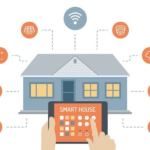In the era of digital transformation, the allure of upgrading one’s home into a more efficient, convenient, and intelligent space has become increasingly irresistible. Investing in smart home technology offers a myriad of benefits, yet requires thoughtful consideration to ensure inclusivity and utility for all inhabitants.
This post delves into vital aspects to contemplate before embracing these innovative solutions, ensuring that your investment not only enhances your lifestyle but also proves inclusive and beneficial for every member of the household.
Understanding Your Needs
Before diving into the vast ocean of smart technology, it’s crucial to assess the specific needs and challenges your household faces. Inclusivity begins with understanding whether these technologies will make life easier for everyone, including children, seniors, or people with disabilities.
Consider the daily routines and how smart solutions could address specific inconveniences or enhance safety and comfort. Not every smart device will be beneficial or necessary for your home, so prioritize based on collective needs rather than trends.
For instance, smart thermostats can significantly improve energy efficiency and comfort, while smart locks can enhance security and convenience for family members with mobility challenges.
Compatibility and Integration
When investing in smart home technology, ensuring that new devices can seamlessly integrate with your existing ecosystem is vital. Inclusivity in the smart home context also means that every family member, regardless of their tech-savviness, can interact with these devices without frustration.
Analyze the compatibility with your current gadgets and consider opting for platforms that offer intuitive interfaces and support a wide range of devices. This harmonious integration will ensure a cohesive and user-friendly environment for everyone.
Privacy and Security
Smart home technologies require a connection to the internet, making them susceptible to privacy breaches and cyber threats. Inclusive consideration of these devices entails understanding and mitigating the risks associated with their use.
Research products with strong security measures and update protocols. Additionally, educate all household members about safe practices, such as using strong passwords and being aware of phishing scams. Privacy and security should be paramount, ensuring that your smart home remains a safe space.
Implementing a secure network, such as a VPN for your home Wi-Fi, can further protect your personal information and that of your loved ones from cyber threats.
Future-Proofing
Technology evolves rapidly, and so do smart home devices. Investing in technology that is easily upgradable or that follows industry standards will ensure that your smart home can adapt to future advancements without requiring complete overhauls.
Consider devices with firmware that can be updated for enhanced features and security. Additionally, opting for modular systems that allow for easy expansions or adjustments can accommodate changing needs, reflecting an inclusive approach to technological adoption.
Economic and Environmental Considerations
Although the initial outlay for smart home technology can be substantial, it’s critical to weigh this against the potential long-term savings, especially in energy consumption, which can also positively impact the environment.
Analyze the cost-effectiveness of each device. For example, smart lighting and thermostats can significantly reduce energy bills, making them not only an economically sound choice but also an environmentally friendly one.
Accessibility Features
For a truly inclusive smart home, consider the accessibility features of each device. Many smart technologies now come with voice control, large buttons, or compatibility with screen readers, making them usable for people with various disabilities.
These features not only empower all individuals to utilize technology to its fullest but also ensure that smart homes are welcoming and accessible environments for every family member.
User Experience and Support
Finally, the ease of use and available support are critical when integrating smart home technologies. Devices should offer straightforward setup processes, clear instructions, and responsive customer support to cater to users of all ages and skill levels.
Assess the quality of customer service and the robustness of the support ecosystem. This includes online resources, community forums, and responsive help desks which facilitate an inclusive and user-friendly experience.
Investing in smart home technology requires a comprehensive approach that goes beyond mere convenience or following the latest trends. By considering inclusivity at the heart of your decisions, you ensure that the benefits of smart technology are accessible and valuable to every member of your household. With the right approach, these innovations can significantly enhance the quality of life, proving that the future of home is not only smart but also inclusive.


